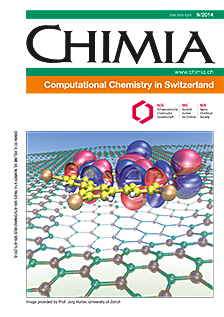Quantum Mechanical Treatment of Variable Molecular Composition: From 'Alchemical' Changes of State Functions to Rational Compound Design
DOI:
https://doi.org/10.2533/chimia.2014.602Keywords:
Alchemical coupling, Computational chemistry, Density functional theory, Potential energy surface, Theorectical chemistryAbstract
'Alchemical' interpolation paths, i.e. coupling systems along fictitious paths without realistic correspondence, are frequently used within materials and molecular modeling simulation protocols for the estimation of changes in state functions such as free energies. We discuss alchemical changes in the context of quantum chemistry, and present illustrative numerical results for the changes of HOMO eigenvalue of the He atom due to alchemical teleportation – the simultaneous annihilation and creation of nuclear charges at different locations. To demonstrate the predictive power of alchemical first order derivatives (Hellmann-Feynman) the covalent bond potential of hydrogen fluoride and hydrogen chloride is investigated, as well as the hydrogen bond in the water–water and water–hydrogen fluoride dimer, respectively. Based on converged electron densities for one configuration, the versatility of alchemical derivatives is exemplified for the screening of entire binding potentials with reasonable accuracy. Finally, we discuss new constraints for the identification of non-linear coupling potentials for which the energy's Hellmann-Feynman derivative will yield accurate predictions.Downloads
Published
2014-09-24
Issue
Section
Scientific Articles
License
Copyright (c) 2014 Swiss Chemical Society

This work is licensed under a Creative Commons Attribution-NonCommercial 4.0 International License.
How to Cite
[1]
K. Y. S. Chang, O. A. von Lilienfeld, Chimia 2014, 68, 602, DOI: 10.2533/chimia.2014.602.







